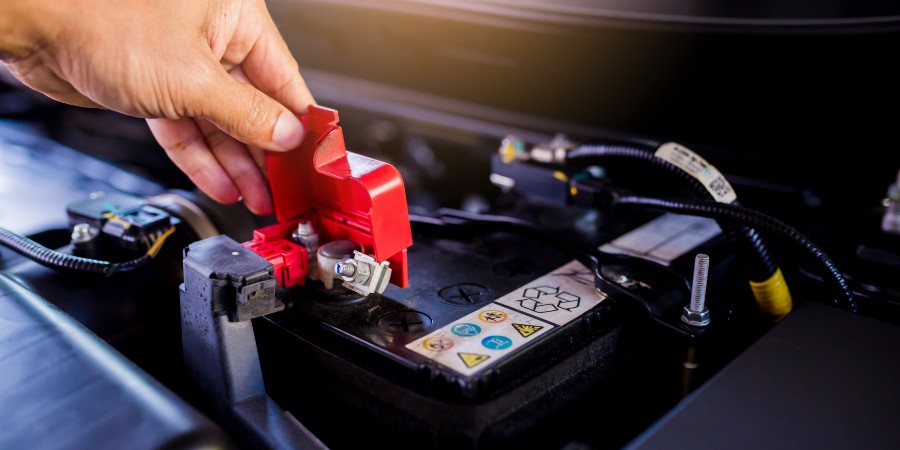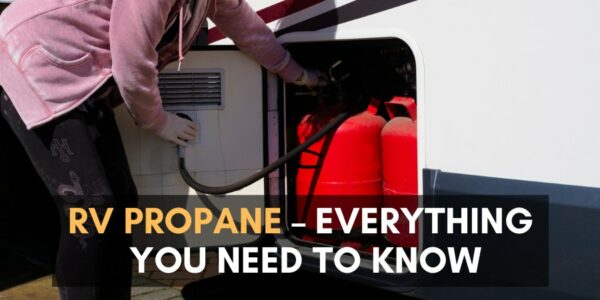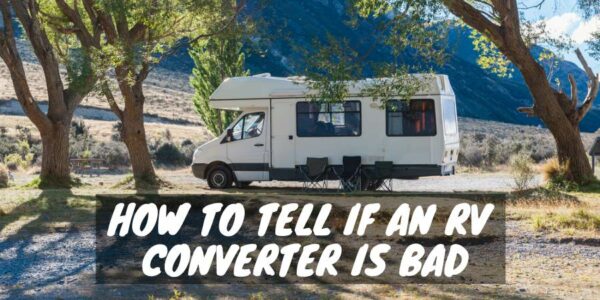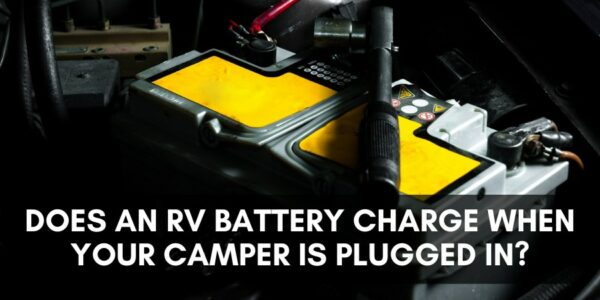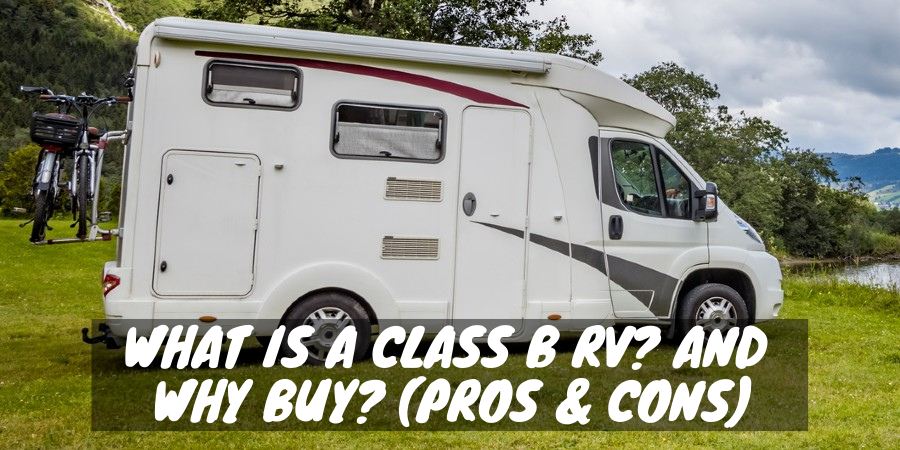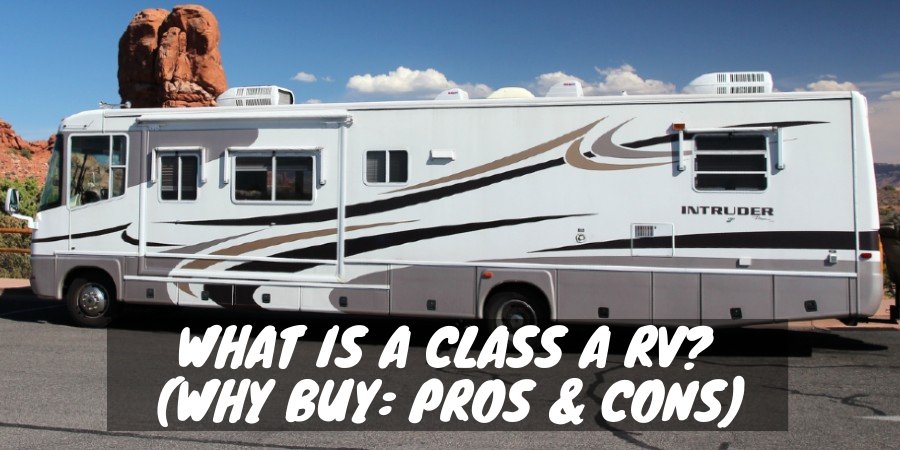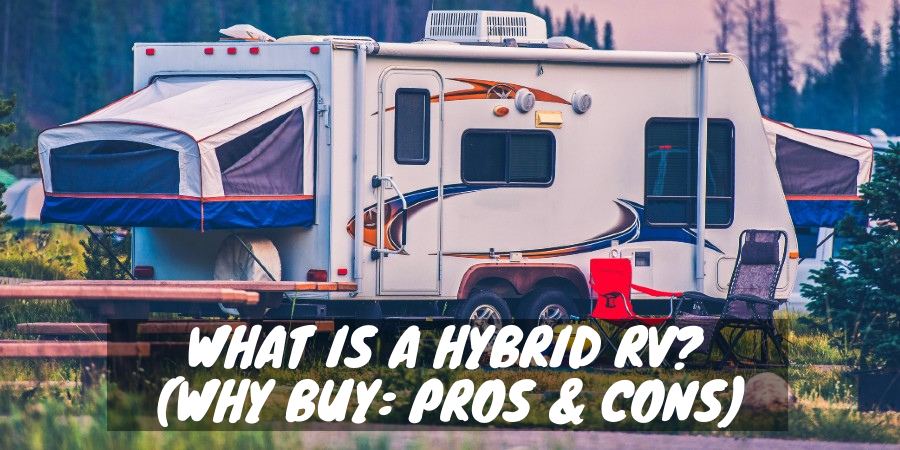RV camping is partially powered by batteries that store electricity for use when not plugged into an electrical outlet. How do batteries work? What types of batteries are best for camping?
How should campers maintain RV batteries? Here are some RV battery basics.
RV Battery Logic
- MAINTENANCE FREE: 12.99x 6.73x 8.43 inches. Weize 12v 100Ah sealed lead acid battery is manufactured with absorbent glass…
- OPERATING TEMPERATURE: Charging Temp ranges from 14℉ (-10℃) to 122℉ (50℃), discharging Temp ranges from 5℉ (-15℃) to…
- LONGER LIFESPAN: Compared with flooded counterparts, its lower self-discharge of 1-3% per month allows long storage before…
- APPLICABILITY: With mature, reliable and well-understood technology, WEIZE 12V 100ah deep cycle battery is durable and can provide…
- WARRANTY: 1-YEAR. WEIZE aims for quality followed up with quality customer service, Amazon doesn’t deal with the return of…
Your motorhome or towing vehicle already has a battery or two used for starting the engine. SLI (starting, lighting, ignition) vehicle batteries are designed to produce a burst of electricity as the engine starts and then await the next start.
RV “house” batteries, those that power electrical appliances and lighting inside your camping quarters, require a different kind of battery: deep-cycle.
A deep-cycle battery is specifically designed to hold a charge longer and deliver it slower than a vehicle starting battery. An SLI battery can’t be discharged very much before it is damaged. Deep-cycle batteries can be discharged (used) more.
The primary types of RV house batteries are lead-acid, AGM, and lithium-ion. Lead-acid batteries have been used in vehicles for nearly 100 years. They contain sulfuric acid that chemically reacts with lead to produce electricity.
Each cell in the battery is designed to produce 2.1 volts of direct current (DC). 12-volt batteries have six cells; 6-volt batteries have three cells. Fully charged, a 12V battery offers 12.6V of electrical power. Lead-acid batteries require periodic maintenance, adding distilled water as needed to keep the cells full.
Absorbed glass mat (AGM) batteries are “maintenance free” sealed batteries that can discharge to a lower voltage than lead-acid before being damaged. They are a newer design and are more expensive. More recently, lithium-ion (LI) batteries were designed for electronics and other more sensitive equipment.
Want to Connect With a Community of Over 1,078 RV Enthusiasts?
They are currently used as house batteries for recreational vehicles (RVs), capable of being fully discharged without harming the battery. Lithium-ion (LI) batteries power numerous electric vehicles. Due to their high cost, these batteries are particularly popular in modern RVs, especially in those equipped with solar power systems.
Batteries for RVs (and cars) are categorized by group sizes. To ensure a replacement battery fits properly in the battery holder, choose one with the same group size as the original battery.
The Battery Council International (BCI) groups for deep-cycle and marine batteries include 22NF, 24, 27, 30H, 31, 4D, and 8D, based on the battery case size. The sizing groups are different for 6V deep-cycle and 12V starting batteries.
The larger the battery, the greater the amp-hours (amount of current amperes it can supply in an hour).
RV Battery Maintenance
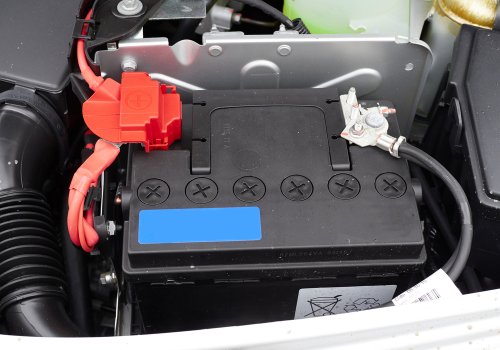
All RV batteries require some level of maintenance, though, for AGM and LI batteries, it is simply making sure that terminals are clean and wires are tightly connected.
10 Maintenance Tips to Help You Get More Life from Your Battery
- Wear rubber or neoprene gloves and eye protection when working around a lead-acid battery.
- If the battery fully discharges, make sure it has sufficient water in the cell (if lead-acid) and recharge it as soon as possible.
- Batteries unused for months should be disconnected from the RV and attached to a battery tender or trickle charger.
- Numerous RV manufacturers advise disconnecting a 12-volt battery from the vehicle during extended periods of inactivity. This is because devices like propane and carbon monoxide alarms, as well as clocks, can gradually deplete the battery’s power.
- Ask your battery retailer for a “state of charge” chart for your RV battery; it indicates the percentage of charge at specific voltages.
- Never let a lead-acid or AGM RV battery discharge below 10.5 volts. If possible, keep the voltage above 12.24V (60% charge).
- Keep a voltage meter plugged into a 12V plug in your RV to monitor battery voltage continually.
- At least once a year, clean battery cables and terminals with a battery terminal brush. Battery washers can reduce corrosion.
- On most RV rigs, the vehicle’s electrical system (motorhome, truck, car) will charge the house battery while driving.
- If you replace an RV battery, recycle the old one.
RV Battery Basics: What You Need to Know (Video)
"Man cannot discover new oceans unless he has the courage to lose sight of the shore."
-- Andre Gide

